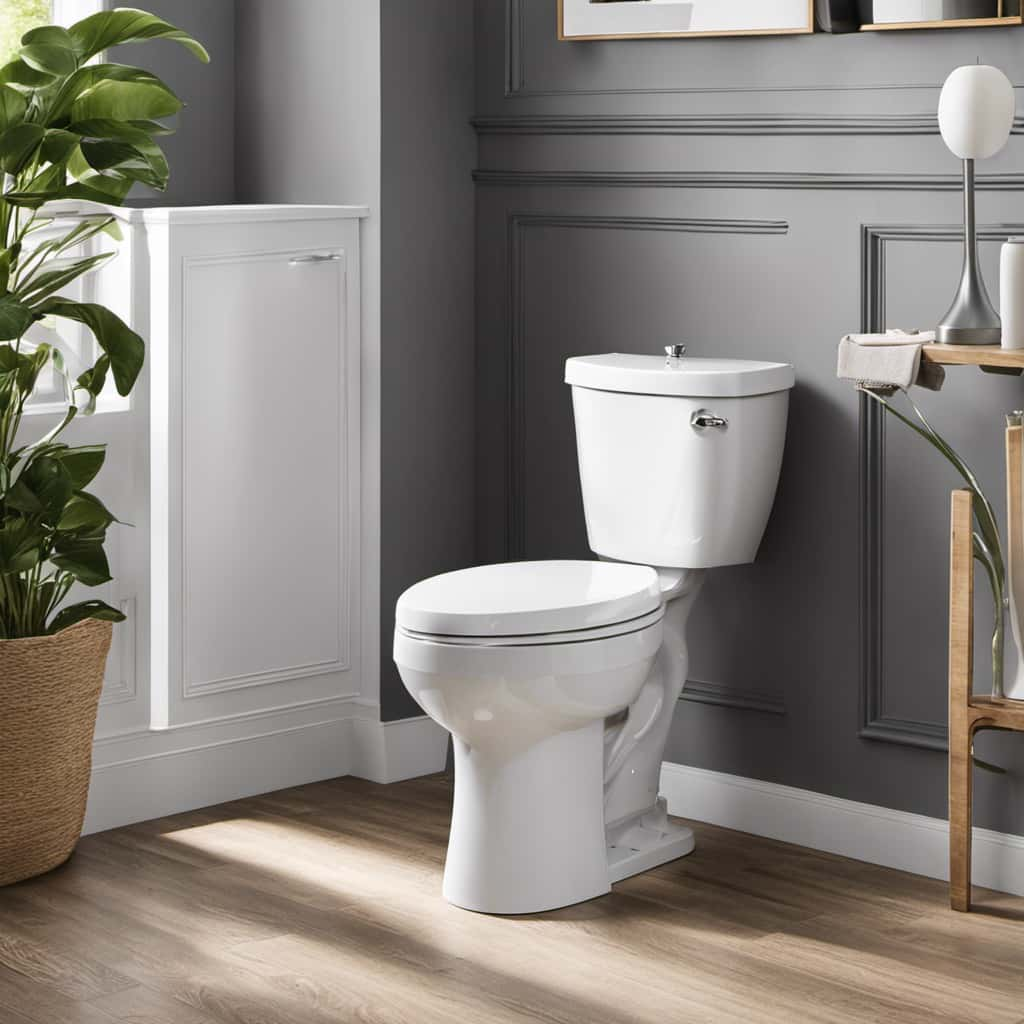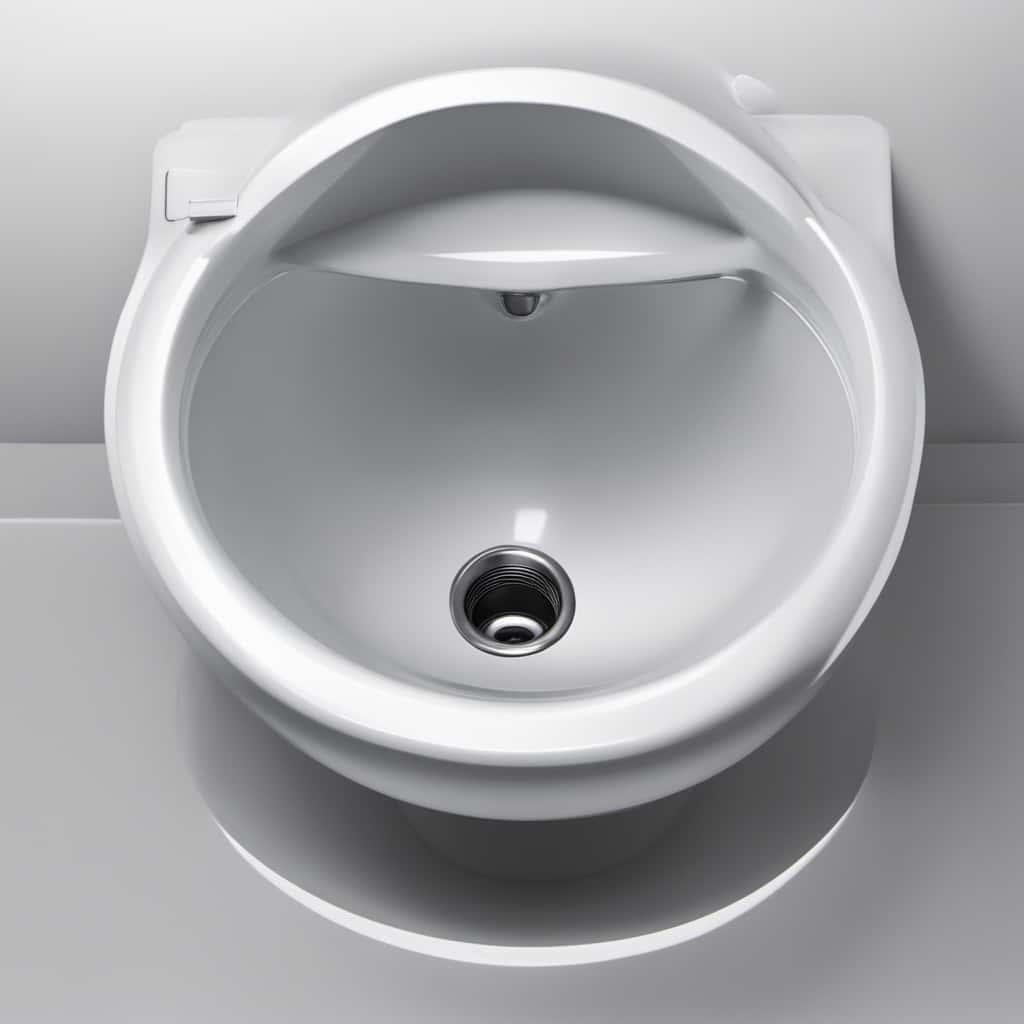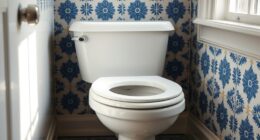We’ve all heard the saying, ‘Out of sight, out of mind,’ but when it comes to flushing cotton buds down the toilet, ignorance is not bliss.
In this article, we explore the potential consequences of this seemingly innocent act.
From blocked pipes and damaged plumbing systems to the strain on sewage treatment plants and the environment, we’ll delve into the technical and analytical aspects of why flushing cotton buds is a decision we should all reconsider.
Key Takeaways
- Flushing a cotton bud can lead to blockage in the toilet pipes.
- Flushing cotton buds can lead to costly plumbing repairs and structural damage.
- Cotton buds can clog filters and screens at sewage treatment plants, reducing their efficiency and causing damage.
- Flushing cotton buds contributes to marine pollution and the presence of harmful microplastics in the water.
Potential Blockage in the Toilet Pipes
Flushing a cotton bud down the toilet can potentially lead to the blockage of the toilet pipes. This is a common issue that often requires professional plumbing repair.
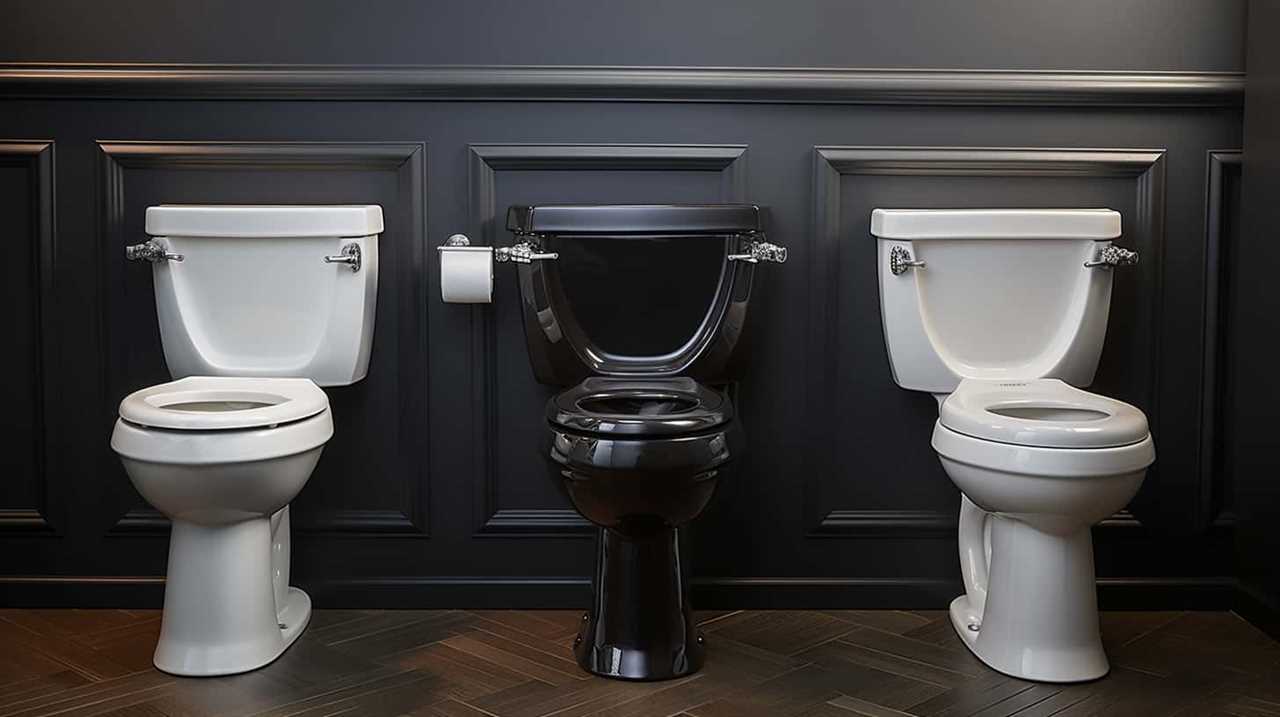
When a cotton bud is flushed, it can get stuck in the pipes, causing a blockage. Over time, other debris, such as hair, toilet paper, and soap scum, can accumulate around the cotton bud, exacerbating the problem. This can result in reduced water flow or complete obstruction of the pipes.
To avoid this situation, regular toilet maintenance is crucial. It’s important to educate oneself about what can and can’t be flushed down the toilet. Proper disposal of cotton buds in the trash and regular cleaning of the toilet pipes can help prevent blockages and costly plumbing repairs.
Risk of Damaging the Plumbing System
As a result of a cotton bud being flushed down the toilet and potentially causing a blockage in the pipes, there’s also a significant risk of damaging the plumbing system. This can lead to costly repairs and inconvenience.
Here are some key points to consider:
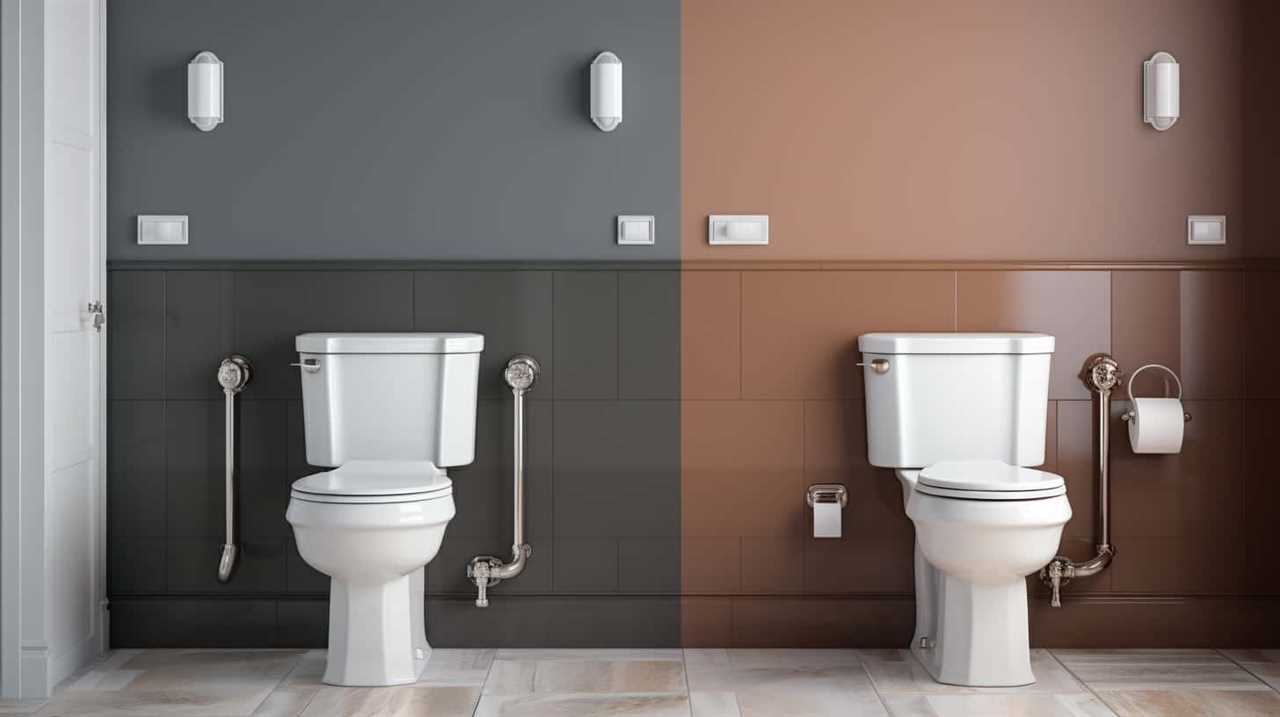
- Increased repair costs: When a cotton bud blocks the plumbing system, it requires professional intervention to unclog the drains. This can be a costly endeavor, as it may involve disassembling parts of the plumbing system or using specialized equipment.
- Structural damage: The pressure caused by a blocked pipe can lead to cracks or leaks in the plumbing system. This can result in water damage to walls, floors, or ceilings, further increasing repair costs.
- Recurring clogged drains: Flushing cotton buds down the toilet can create a cycle of clogged drains. Even if the initial blockage is cleared, residual debris or damage may remain, causing future clogs.
It is crucial to dispose of cotton buds properly to prevent these risks and maintain the integrity of your plumbing system.
Impact on Sewage Treatment Plants
When cotton buds are flushed down the toilet, they can adversely affect the functioning of sewage treatment plants. Sewage treatment plants play a crucial role in removing contaminants from wastewater before it is released back into the environment. However, the presence of cotton buds in the sewage can cause significant problems in the treatment process.
| Impacts on Sewage Treatment Plants |
|---|
| 1. Clogging |
| Cotton buds can clog the filters and screens at the sewage treatment plants, reducing their efficiency and leading to maintenance issues. |
| ———————————– |
| 2. Damage to Equipment |
| The presence of cotton buds can cause damage to pumps and other mechanical equipment used in the treatment process, resulting in costly repairs and downtime. |
| ———————————– |
| 3. Sewage Contamination |
| Cotton buds can escape the treatment process and end up in rivers, lakes, or oceans, contributing to sewage contamination and water pollution. |
To prevent these issues, it is essential to dispose of cotton buds properly in the trash rather than flushing them down the toilet. This simple action can help protect the functioning of sewage treatment plants and prevent further sewage contamination and water pollution.
Environmental Consequences of Flushing Cotton Buds
To continue our discussion on the impact of flushing cotton buds down the toilet, let’s now explore the environmental consequences of this action.
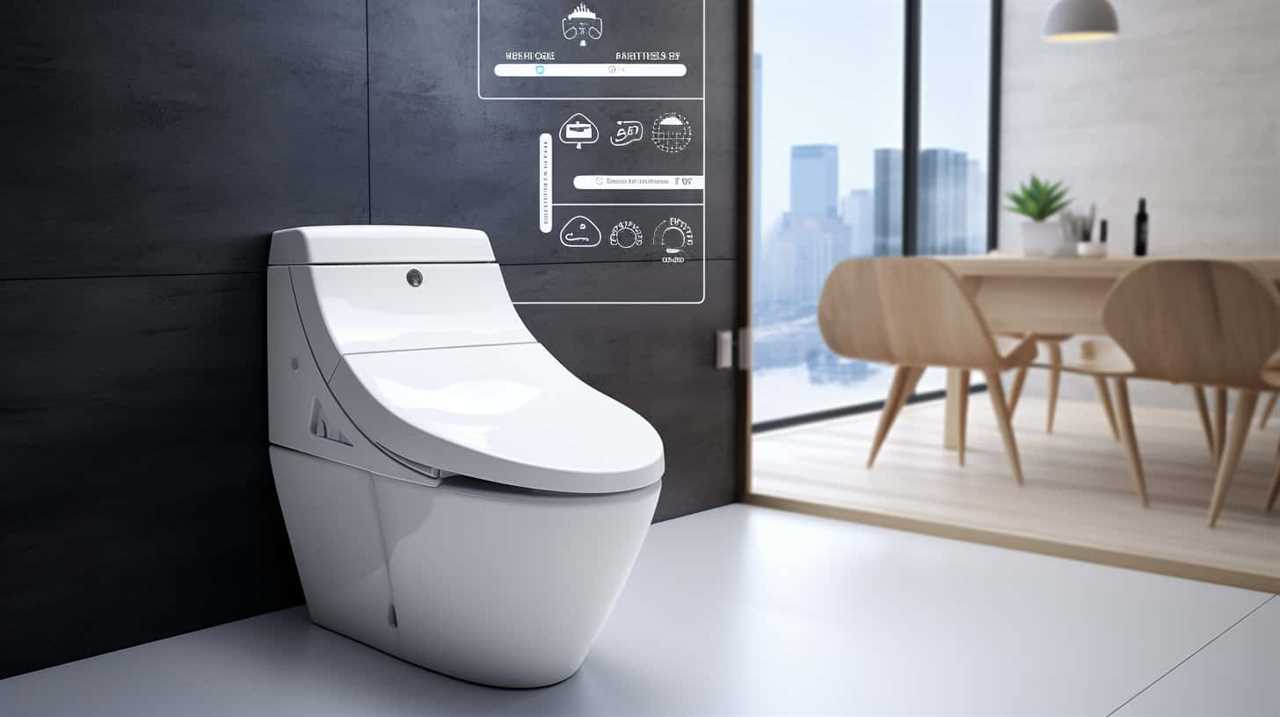
Flushing cotton buds can have significant negative effects on the environment, particularly in terms of marine pollution and microplastic contamination.
- Marine pollution: When cotton buds are flushed down the toilet, they can end up in rivers, lakes, and ultimately the ocean. This contributes to the pollution of marine ecosystems, harming marine life such as fish, turtles, and seabirds. The presence of cotton buds can also disrupt the balance of the marine ecosystem, leading to long-term damage.
- Microplastic contamination: Cotton buds are made of plastic materials, which means that when they enter the water system, they break down into smaller pieces called microplastics. These microplastics are incredibly harmful to marine life as they can be ingested by organisms and accumulate in their tissues. This contamination can disrupt the entire food chain, affecting not only marine animals but also humans who consume seafood.
The environmental consequences of flushing cotton buds down the toilet are therefore significant, highlighting the importance of proper disposal methods to protect our ecosystems.
Safer Alternatives for Disposing of Cotton Buds
To ensure the proper disposal of cotton buds and avoid environmental harm, we can explore safer alternatives. Instead of flushing them down the toilet, there are biodegradable and recycling options available. Biodegradable cotton buds are made from materials that can break down naturally over time, reducing their impact on the environment. These can be disposed of in regular waste bins or composted if they meet the requirements. Recycling options involve separating the cotton bud from its plastic stick and disposing of them in the appropriate recycling bins. Below is a table summarizing the safer alternatives for disposing of cotton buds:
| Safer Alternatives | Disposal Method |
|---|---|
| Biodegradable cotton buds | Regular waste bins or composting if suitable |
| Recycling options | Separate cotton bud from plastic stick and dispose in recycling bins |
Frequently Asked Questions
Can Flushing Cotton Buds Down the Toilet Cause Damage to the Sewage Treatment Plants?
Flushing cotton buds down the toilet can cause toilet clogs and contribute to water pollution. Damage to sewage treatment plants can occur when these non-biodegradable items accumulate and disrupt the system’s operations.
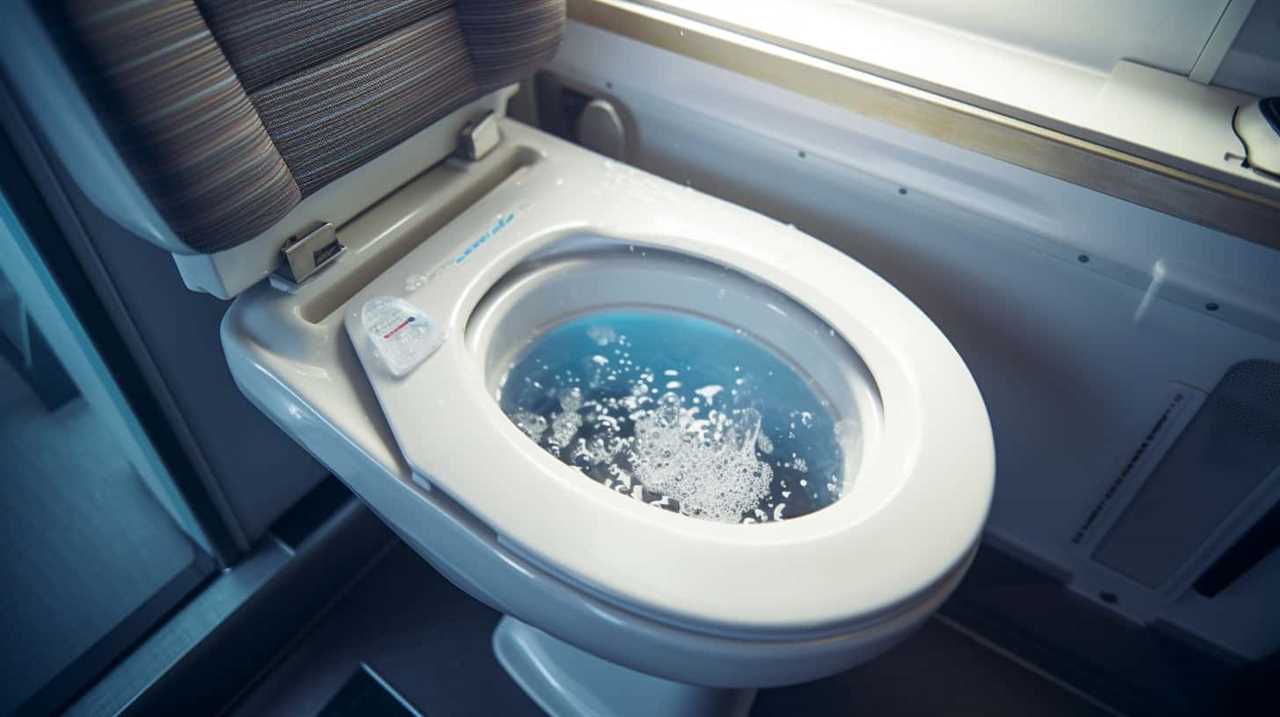
Are There Any Safer Alternatives for Disposing of Cotton Buds?
There are eco-friendly alternatives for proper cotton bud disposal. By exploring these options, we can ensure that we are not harming the environment or causing damage to sewage treatment plants. Let’s delve into the details.
What Are the Potential Consequences of Flushing Cotton Buds for the Environment?
Potential risks of flushing cotton buds include pollution effects on the environment. These non-biodegradable items can clog sewage systems, leading to blockages, overflows, and water pollution. Proper disposal methods are crucial to prevent such consequences.
Can Flushing Cotton Buds Down the Toilet Lead to a Blockage in the Toilet Pipes?
Flushing cotton buds down the toilet can lead to blockage in the toilet pipes. We must take preventive measures to avoid this, considering the potential environmental impact. It is crucial to be aware of the consequences.
What Is the Risk of Damaging the Plumbing System When Flushing Cotton Buds?
When assessing the risk of damaging the plumbing system, it is important to consider the proper disposal of cotton buds. Flushing them down the toilet can lead to blockages and potential damage to pipes.
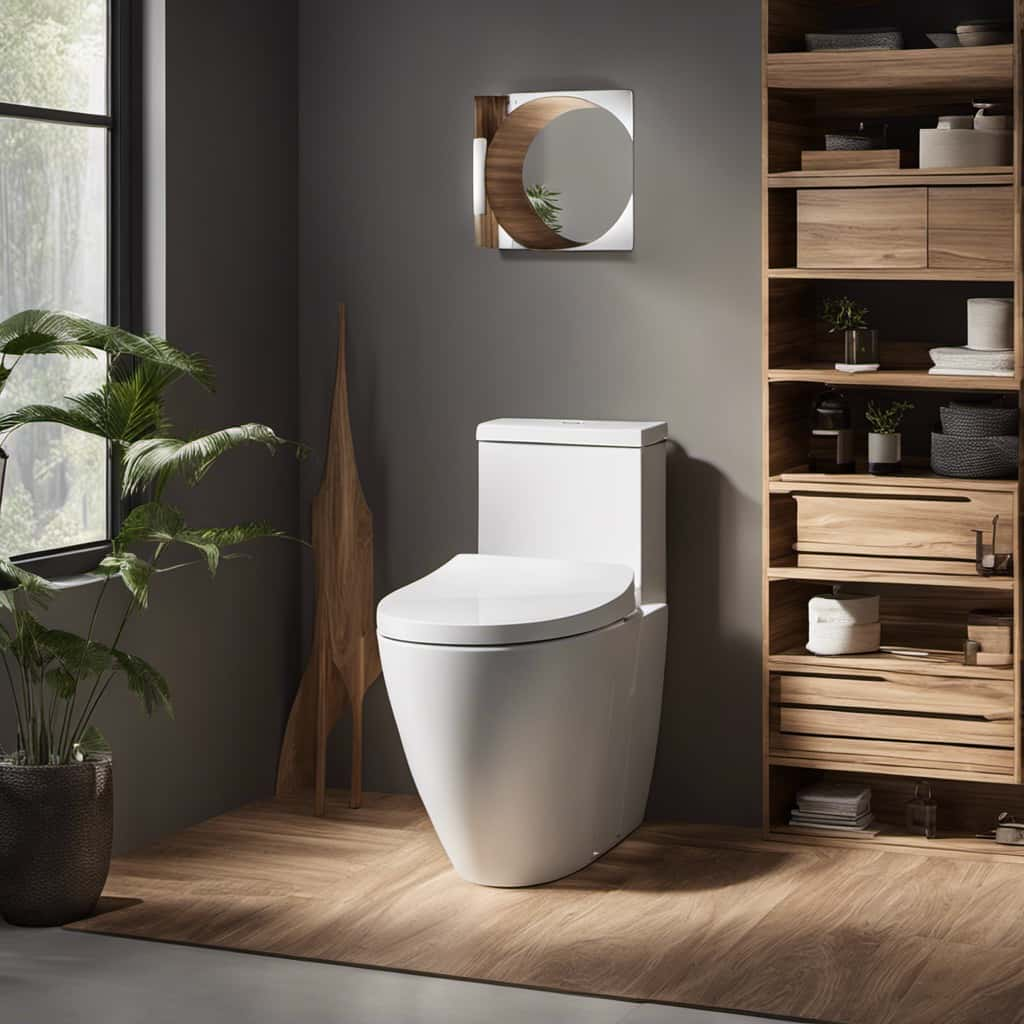
Conclusion
In conclusion, flushing cotton buds down the toilet may seem like a convenient solution, but it can have serious consequences.
From potential blockages in the toilet pipes to damaging the plumbing system and impacting sewage treatment plants, the environmental consequences are significant.
It’s essential to consider safer alternatives for disposing of cotton buds, such as properly disposing them in the trash.
Let’s make responsible choices to protect our plumbing systems and the environment.


